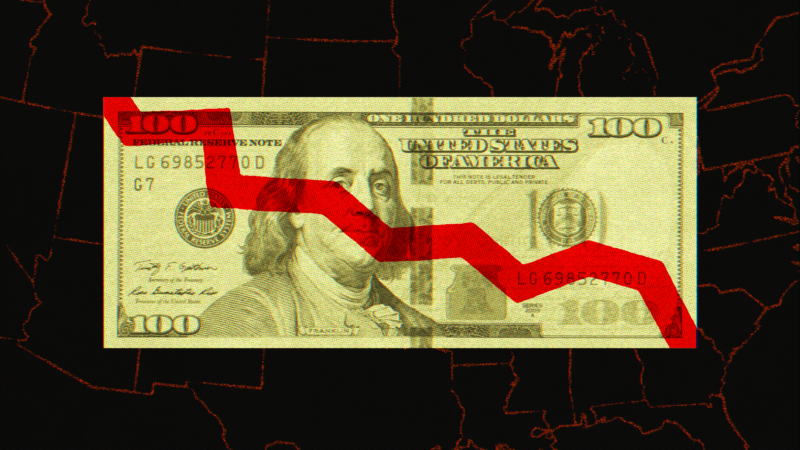States Spend Billions on Economic Development Deals With Little Return
In a new report, the Center for Economic Accountability analyzed economic development data from all 50 states and the District of Columbia, and there's very little to show for billions in annual spending.

As large companies determine where to invest their development dollars, state governments compete to gain or keep those projects within their borders. As such, each state has some form of an economic development agency (EDA), either within the state government or a nonprofit that works closely in tandem with it. According to a 2016 report by the Urban Institute, EDAs "are tasked with supporting existing businesses, encouraging entrepreneurship, recruiting new businesses, and coordinating the economic development activities" of local government interests.
A 2012 white paper from the National Governors Association said that "policies to boost innovation, competitiveness and job creation are top priorities for the nation's governors." But new data would seem to suggest that state actions are rarely worth the expense.
The Center for Economic Accountability (CEA), a think tank that advocates for free market alternatives to corporate welfare, published a report today finding that even by states' own metrics, EDAs have very little positive impact despite significant investment of taxpayer money.
Analyzing data from all 50 states and Washington, D.C., the Center determined that all EDAs "collectively claim to have 'created or retained' a combined total of fewer than 625,000 jobs in their most recent fiscal years." By comparison, the U.S. economy added 4.8 million jobs in 2022.
To get that relatively low return, EDAs spend tens of billions of dollars, with one estimate as high as $95 billion annually. Previous CEA reporting determined that 2022 also saw the highest number of state economic development deals with billion-dollar subsidies.
Proponents say that incentives are simply a cost of doing business: The head of Georgia's EDA told Reason, "There's almost an expectation by companies that they get some level of incentives, especially for projects of [considerable] size and magnitude." But research shows that such subsidies actually make very little difference in determining where a particular business decides to set up shop. In 2018, Timothy Bartik of the W.E. Upjohn Institute for Employment Research studied the existing research on these so-called "but for" subsidies—as in, but for this incentive, a company will go elsewhere.
Bartik determined that "typical incentives probably tip somewhere between 2 percent and 25 percent of incented firms toward making a decision favoring the location providing the incentive," meaning that "for at least 75 percent of incented firms, the firm would have made a similar decision location/expansion/retention decision without the incentive." Unfortunately, "many of the current incentive studies are positively biased toward overestimating the 'but for' percentage."
A perfect example of this phenomenon is Amazon's HQ2. When the e-commerce giant announced its intent to build a second corporate headquarters in 2017, it openly solicited bids from "local and state government leaders" who want to "bring Amazon to their community." In response, more than 230 cities and states submitted generous incentive offers, many crossing into the billions of dollars. Ultimately, the company turned down more generous bids from potential suitors like Maryland, Dallas, and Toronto and chose the suburbs of Washington, D.C., and New York City. Clearly, the proximity to the two primary sources of U.S. political power was more important than whoever offered the largest tax break. (Amazon later backed out of the New York location after local opposition.)
While states may insist that incentives are necessary to attract investment, even their own numbers show that the benefit is simply not worth the cost. "Whether you accept economic development agencies' figures as correct or not," said CEA President John Mozena, "you simply cannot arrive at a result that justifies the bloated price tags of today's economic development programs."


Show Comments (25)